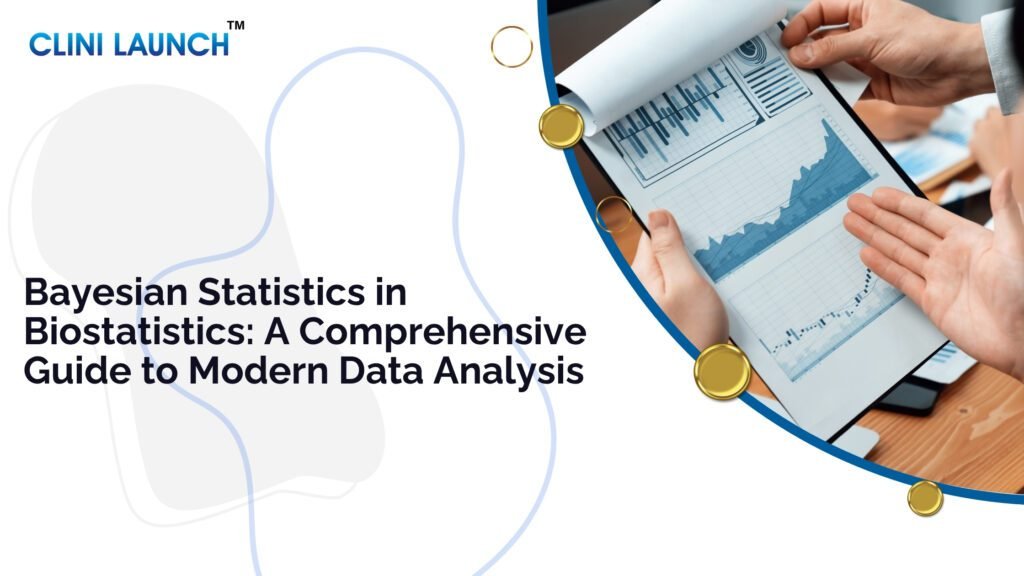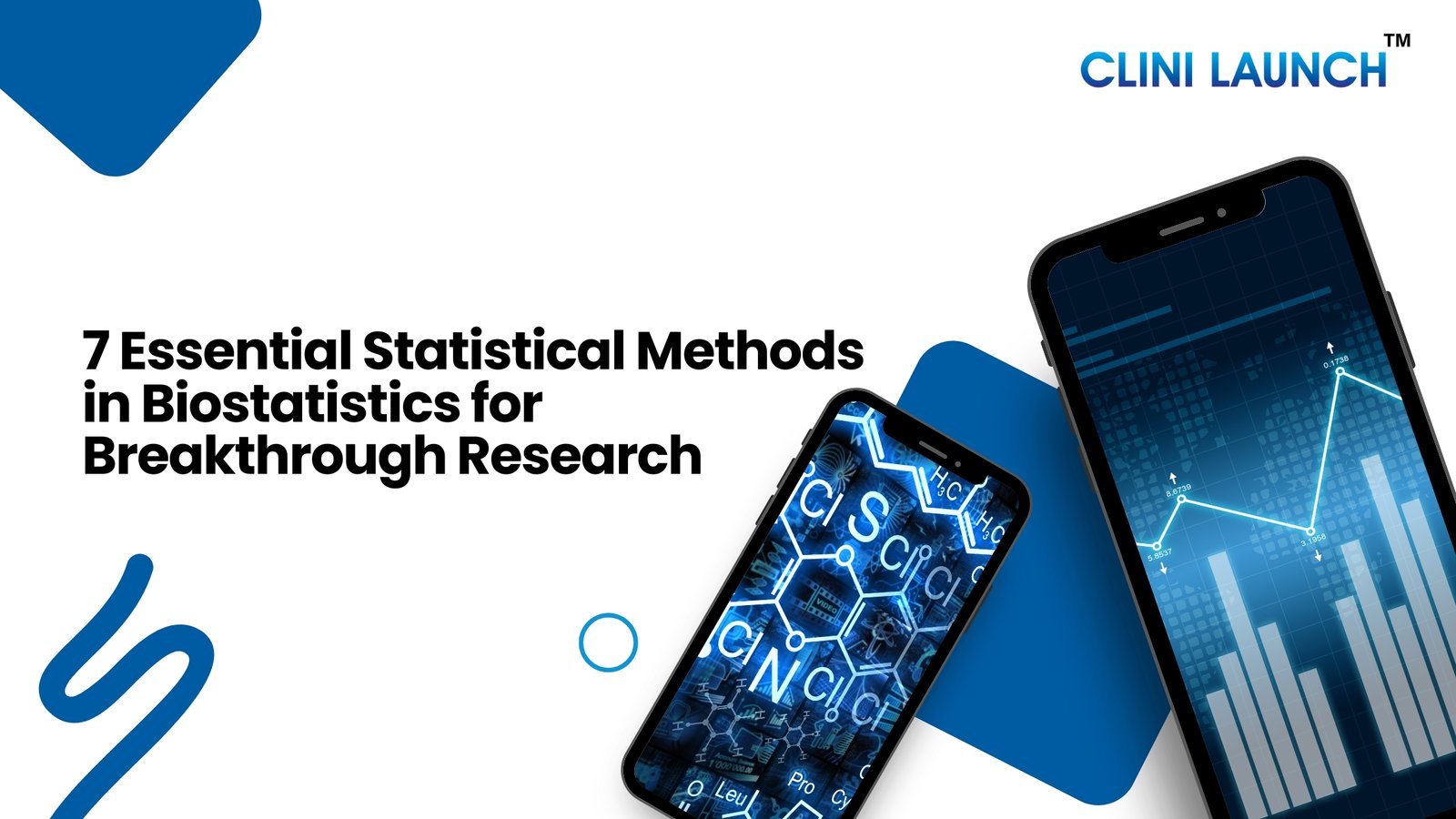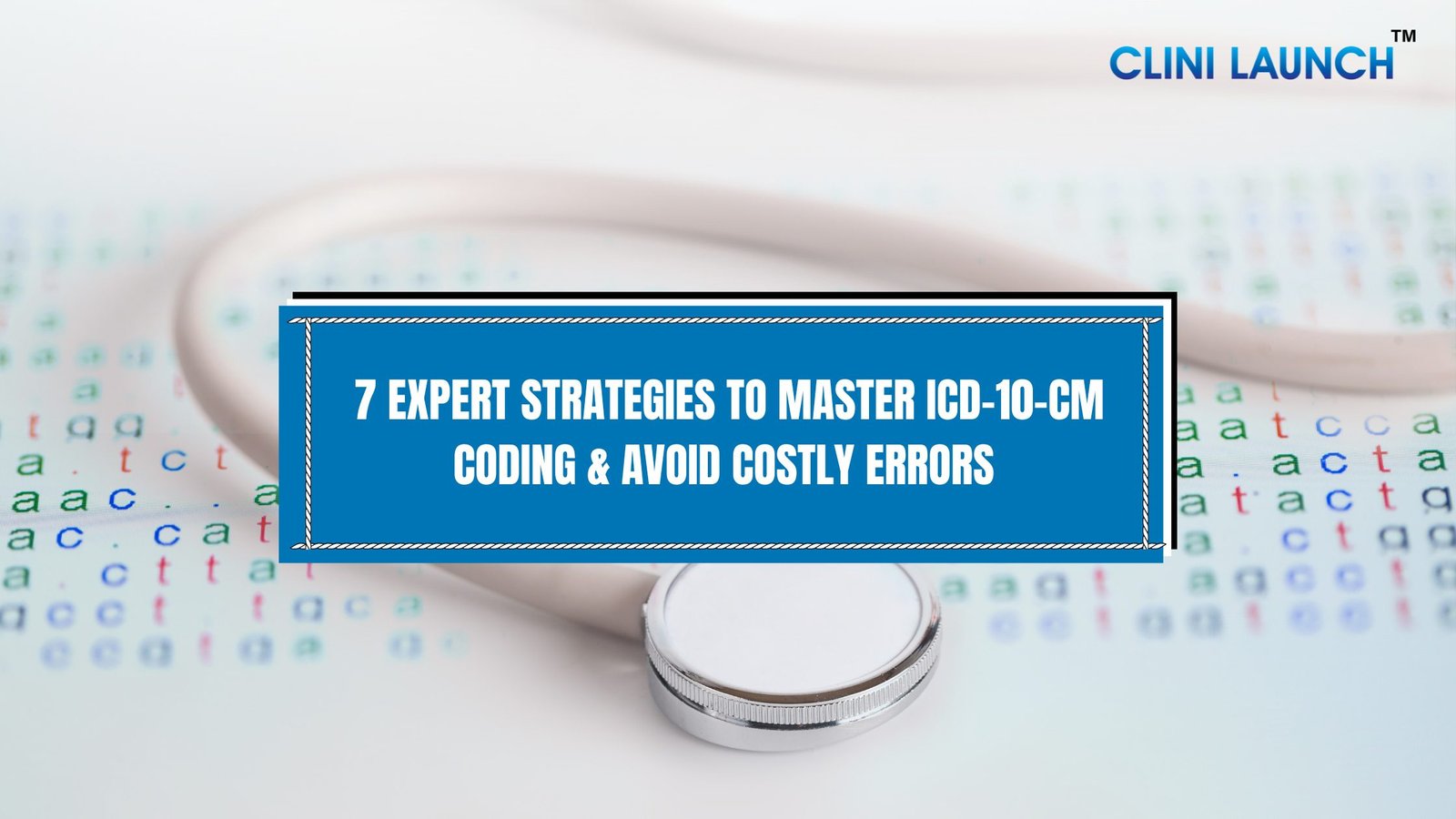Our quest is to extract meaningful insights from complex biological and health data in biostatistics. We strive to understand disease patterns, evaluate treatment efficacies, and ultimately improve public health outcomes. Traditionally, frequentist statistics have been the dominant paradigm.
However, an increasingly powerful and intuitive approach, Bayesian statistics, is reshaping how we approach data analysis, offering a flexible framework for incorporating prior knowledge and quantifying uncertainty in a more direct manner. This shift is not merely about new techniques; it’s about a fundamental change in statistical rethinking, encouraging a more nuanced interpretation of evidence.
This blog post aims to illustrate Bayesian statistics, particularly for those in the biostatistics field. We will journey from its foundational principles to its sophisticated applications, exploring how Bayesian methods for data analysis are revolutionizing research in medicine, public health, and biology.
Whether you’re a student grappling with new statistical concepts or a seasoned researcher looking to expand your analytical toolkit, understanding the Bayesian approach is becoming indispensable. We’ll also touch upon advanced Bayesian statistics and its synergy with Bayesian statistics machine learning, highlighting its growing importance in modern data-driven biostatistical inquiry.
Enroll Now: Biostatistics Course
The Bayesian Paradigm: A Different Way of Reasoning
At its heart, Bayesian statistics differ from frequentist statistics in their definition of probability.
- Frequentist View: Probability is seen as the long-run frequency of an event. If we were to repeat an experiment an infinite number of times, the probability of an outcome is the proportion of times that outcome occurs. Parameters (like the true mean of a population) are considered fixed, unknown constants. Our confidence intervals, for example, are about the process: if we repeated the study many times, 95% of such calculated intervals would contain the true parameter.
- Bayesian View: Probability is interpreted as a degree of belief or confidence in a statement or the value of a parameter. Parameters are treated as random variables about which we can have a probability distribution. This distribution reflects our uncertainty about the parameter’s true value.
This conceptual difference is extreme. The Bayesian approach allows us to make direct probability statements about parameters, such as “there is a 95% probability that the true mean lies between X and Y,” which is often how frequentist confidence intervals are mistakenly interpreted.
The core of the Bayesian paradigm lies in updating our beliefs considering new evidence. We start with an initial belief (the prior), collect data (the likelihood), and combine these to form an updated belief (the posterior). This iterative process of learning is central to statistical rethinking and scientific inquiry.
Foundational Elements of Bayesian Methodology: Prior, Likelihood, and Posterior
The engine driving Bayesian inference is Bayes’ Theorem, a relatively simple formula with profound implications. Let’s break down its components:
1. Prior Probability Distribution (P(θ))
The prior represents our initial beliefs about a parameter (θ) before observing the current data. This is a key differentiator of Bayesian statistics. Priors can be:
The choice of prior is a critical step in Bayesian analysis and should always be justified and subjected to sensitivity analysis (i.e., checking if reasonable changes to the prior significantly alter the conclusions).
2. Likelihood (P (Data | θ))
The likelihood function is familiar from frequentist statistics. It quantifies how probable the observed data are, given a particular value (or set of values) for the parameter(s) θ. It represents the information brought by the current data. For instance, in a clinical trial, the likelihood would describe the probability of observing the trial outcomes (e.g., number of recoveries) if the drug had a certain true efficacy (the parameter).
3. Posterior Probability Distribution (P (θ | Data))
The posterior is the holy grail of Bayesian inference. It represents our updated beliefs about the parameter θ after observing the data. It is the result of combining our prior beliefs with the information from the data, mediated by the likelihood.
Mathematically, Bayes’ Theorem states:
P (θ | Data) = [P (Data | θ) * P(θ)] / P(Data)
Where:
- P (θ | Data) is the posterior probability of the parameter given in the data.
- P (Data | θ) is the likelihood of the data given by the parameter.
- P(θ) is the prior probability of the parameter.
- P(Data) is the marginal likelihood of the data (also known as the evidence). It acts as a normalizing constant, ensuring that the posterior distribution integrates to 1. It’s calculated as ∫ P (Data | θ) * P(θ) dθ.
Often, P(Data) is computationally challenging to calculate directly. Thus, Bayes’ Theorem is frequently expressed in its proportional form:
Posterior ∝ Likelihood × Prior
This form highlights that the posterior is a compromise between what we believed before (prior) and what the current data tells us (likelihood).
A Simple Biostatistical Example: Diagnosing a Disease
Imagine a new diagnostic test for a rare disease.
- Prior: We know from epidemiological studies that the prevalence of the disease (our parameter θ, the probability an individual has the disease) is 1 in 1000. So, P (θ = has disease) = 0.001. This is our prior belief.
- Likelihood: The test has known properties:
- Sensitivity (True Positive Rate): P (Test Positive | Has Disease) = 0.99
- Specificity (True Negative Rate): P (Test Negative | No Disease) = 0.95
- Therefore, False Positive Rate: P (Test Positive | No Disease) = 1 – 0.95 = 0.05
- Data: A randomly selected individual tests positive.
- Question: What is the probability this individual has the disease (the posterior, P (Has Disease | Test Positive))?
Using Bayes’ Theorem:
P (Has Disease | Test Positive) = [P (Test Positive | Has Disease) * P (Has Disease)] / P (Test Positive)
To find P (Test Positive), we use the law of total probability:
P(Test Positive) = P(Test Positive | Has Disease) * P(Has Disease) + P(Test Positive | No Disease) * P(No Disease)
P(Test Positive) = (0.99 * 0.001) + (0.05 * (1 – 0.001))
P(Test Positive) = 0.00099 + (0.05 * 0.999)
P(Test Positive) = 0.00099 + 0.04995 = 0.05094
Now, the posterior:
P(Has Disease | Test Positive) = (0.99 * 0.001) / 0.05094
P(Has Disease | Test Positive) ≈ 0.00099 / 0.05094 ≈ 0.0194
So, even with a positive test from a sensitive test, the probability the individual has the disease is only about 1.94%. This counterintuitive result highlights the importance of the prior (the rarity of the disease) in Bayesian reasoning.
Advantages of Bayesian Methods in Biostatistical Research
The Bayesian framework offers several compelling advantages, making it particularly well-suited for many challenges encountered in biostatistics:
- Intuitive Interpretation of Results: Posterior probabilities provide direct statements about parameters. A 95% credible interval (the Bayesian equivalent of a confidence interval) means there is a 95% probability that the true parameter value lies within that interval, which aligns with natural human intuition.
- Formal Incorporation of Prior Knowledge: Biostatistical research rarely occurs in a vacuum. Previous studies, biological plausibility, or expert consensus can be formally incorporated via prior distributions. This can lead to more efficient use of information, especially in studies with limited sample sizes.
- Improved Performance with Small Samples: Bayesian methods can be more stable and provide more reasonable estimates with small datasets, especially when informative priors are available to help guide the inference.
- Flexibility in Modeling: The Bayesian framework is incredibly flexible for building complex models that reflect underlying biological processes, such as hierarchical models for clustered data (e.g., patients within hospitals), longitudinal data analysis, or modeling non-linear relationships.
- Direct Probability Statements about Hypotheses: Instead of p-values (the probability of observing data as extreme or more extreme than the current data, assuming the null hypothesis is true), Bayesian methods can directly calculate the probability of a hypothesis being true, given the data (e.g., P(Hypothesis | Data)).
- Handling Nuisance Parameters: Bayesian methods naturally integrate nuisance parameters (parameters that are part of the model but not of primary interest) to focus on the parameters of interest.
- Predictive Capabilities: The posterior predictive distribution allows for straightforward generation of predictions for future observations, along with associated uncertainties.
Bayesian Methods for Data Analysis: The Computational Landscape
While Bayes’ Theorem is conceptually simple, calculating the posterior distribution, especially the normalizing constant P(Data), can be mathematically intractable for all but the simplest models. This is because it often involves high-dimensional integration. The emergence of powerful computational techniques has been the key to the widespread adoption of Bayesian methods for data analysis.
MCMC algorithms are a class of computational methods that allow us to draw samples from the posterior distribution without needing to calculate P(Data) directly. The general idea is to construct a Markov chain whose stationary distribution is the target posterior distribution. After a “burn-in” period (allowing the chain to converge to the stationary distribution), the samples drawn from the chain can be treated as samples from the posterior.
Common MCMC algorithms include:
- Metropolis-Hastings Algorithm: A general-purpose algorithm that proposes new parameter values and accepts or rejects them based on a rule that ensures the chain converges to the posterior.
- Gibbs Sampling: A special case of Metropolis-Hastings that is applicable when the full conditional distributions of each parameter (the distribution of one parameter given all others and the data) are known and easy to sample from.
- Hamiltonian Monte Carlo (HMC) and No-U-Turn Sampler (NUTS): More advanced and efficient algorithms, particularly for complex, high-dimensional models. They use concepts from physics (Hamiltonian dynamics) to explore the parameter space more effectively, often leading to faster convergence and less correlated samples. Stan, a popular Bayesian software, primarily uses NUTS.
Convergence Diagnostics:
Since MCMC methods are iterative, it’s crucial to assess whether the Markov chain has converged to the target posterior distribution. Common diagnostics include:
- Trace Plots: Visual inspection of the sampled parameter values over iterations. A well-converged chain should look like a “fat hairy caterpillar,” indicating stable exploration of the parameter space.
- Autocorrelation Plots: Assessing the correlation between samples at different lags. High autocorrelation means the chain is mixing slowly.
- Gelman-Rubin Statistic (R-hat): Compares the variance within multiple chains to the variance between chains. Values close to 1 suggest convergence.
- Effective Sample Size (ESS): Estimates the number of independent samples equivalent to the autocorrelated MCMC samples. A higher ESS is better.
Software for Bayesian Analysis:
Several software packages facilitate the implementation of Bayesian methods for data analysis:
- Stan (via RStan, PyStan, CmdStan): A state-of-the-art platform for statistical modeling and high-performance statistical computation. It uses its own modeling language and HMC/NUTS for sampling.
- JAGS (Just Another Gibbs Sampler) and BUGS (Bayesian inference Using Gibbs Sampling): Use the BUGS language for model specification and primarily rely on Gibbs sampling. Often accessed via R packages like rjags and R2jags.
- R Packages: brms (Bayesian Regression Models using Stan) and rstanarm provide user-friendly interfaces to Stan for fitting many common regression models. INLA (Integrated Nested Laplace Approximations) offers a fast alternative to MCMC for certain classes of models (latent Gaussian models).
- Python Libraries: PyMC3 (now PyMC) is a popular Python library for Bayesian modeling and probabilistic machine learning.
Applications of Bayesian Statistics in Biostatistical Practice
The versatility of Bayesian statistics has led to its application across a wide spectrum of biostatistical problems:
Clinical Trials
- Adaptive Designs: Bayesian methods allow for flexible trial modifications based on accumulating data, such as early stopping for efficacy or futility, or re-allocating patients to more promising treatment arms.
- Incorporating Historical Data: Prior distributions can formally incorporate data from previous trials, potentially reducing sample size requirements for new trials or strengthening evidence.
- Small Populations/Rare Diseases: Bayesian approaches are particularly valuable when data is scarce, as priors can help stabilize estimates.
- Benefit-Risk Assessment: Bayesian decision theory can be used to formally weigh the benefits and risks of a new treatment.
Epidemiology
- Disease Mapping: Spatial Bayesian models can estimate disease risk across geographical areas, borrowing strength from neighboring regions to produce smoother and more stable risk maps, especially in areas with small populations.
- Modeling Infectious Disease Outbreaks: Bayesian methods can estimate key epidemiological parameters (e.g., R0, the basic reproduction number) and forecast outbreak trajectories, incorporating uncertainty.
- Meta-Analysis: Bayesian meta-analysis provides a natural framework for combining evidence from multiple studies, allowing for heterogeneity between studies and the incorporation of prior beliefs about effect sizes.
Drug Development
- Pharmacokinetics/Pharmacodynamics (PK/PD) Modeling: Bayesian hierarchical models are widely used to describe drug absorption, distribution, metabolism, and excretion (PK) and the drug’s effect on the body (PD), accounting for inter-individual variability.
- Dose-Finding Studies: Bayesian adaptive designs can efficiently identify optimal drug dosages.
Genomics and Bioinformatics:
- Differential Gene Expression: Bayesian models can identify genes that are differentially expressed between conditions, often providing better control of false positives and false negatives in high-dimensional settings.
- Genetic Association Studies: Bayesian methods can be used to assess the evidence for association between genetic variants and disease, incorporating prior knowledge about gene function or linkage disequilibrium.
- Phylogenetics: Bayesian inference is a cornerstone of modern phylogenetic tree reconstruction.
Personalized Medicine
- Bayesian models can help predict individual patient responses to treatments based on their unique characteristics (genetic, clinical, environmental), paving the way for tailored therapeutic strategies.
Advanced Bayesian Statistics: Pushing the Boundaries
Beyond the core concepts, advanced Bayesian statistics encompasses a range of sophisticated techniques that further enhance our ability to model complex data and answer intricate research questions:
- Hierarchical Models (Multilevel Models):
These models are designed for data with nested or grouped structures (e.g., patients within clinics, students within schools, repeated measurements within individuals). They allow parameters to vary across groups while also “borrowing strength” across groups by assuming that group-specific parameters are drawn from a common distribution. This leads to more stable and realistic estimates, especially for groups with small sample sizes. Hierarchical models are a cornerstone of modern applied Bayesian statistics.
- Bayesian Model Selection and Averaging:
Often, several plausible models could explain the data. Bayesian model selection techniques (e.g., using Bayes Factors or information criteria like DIC or WAIC) help compare different models. Bayesian Model Averaging (BMA) goes a step further by making inferences based on a weighted average of multiple models, thereby accounting for model uncertainty.
- Bayesian Decision Theory:
This provides a formal framework for making optimal decisions under uncertainty. It involves specifying a loss function (quantifying the consequences of different decisions) and choosing the action that minimizes expected posterior loss. This is highly relevant in clinical decision-making and health policy.
- Non-parametric Bayesian Methods:
These methods allow for greater flexibility in model structure, reducing reliance on specific parametric assumptions (e.g., assuming data follow a normal distribution). Examples include Dirichlet Process Mixture Models for clustering and Gaussian Processes for regression and classification.
- Causal Inference:
Bayesian approaches are increasingly used in causal inference, for example, in estimating treatment effects from observational data by modeling potential outcomes and adjusting for confounders within a probabilistic framework.
Bayesian Statistics and Machine Learning in Health Sciences
There’s a significant and growing overlap between Bayesian statistics machine learning. Many machine learning techniques have Bayesian interpretations or counterparts:
- Bayesian Networks: Probabilistic graphical models that represent conditional dependencies among a set of variables. They are used for reasoning under uncertainty and have applications in diagnostics and prognostics.
- Gaussian Processes: A powerful non-parametric Bayesian approach for regression and classification, providing uncertainty estimates for predictions.
- Variational Inference: An alternative to MCMC for approximating posterior distributions, often faster for very large datasets and complex models, commonly used in Bayesian deep learning.
- Regularization: Many regularization techniques of Bayesian statistics machine learning (e.g., L1 and L2 regularization in regression) can be shown to be equivalent to Bayesian models with specific prior distributions on the parameters. For instance, L2 regularization (Ridge regression) corresponds to a Gaussian prior to the regression coefficients.
In biostatistics, Bayesian statistics machine learning techniques are being applied to tasks like predictive modeling for disease risk, image analysis (e.g., in radiology), and drug discovery. The Bayesian framework’s ability to quantify uncertainty is particularly valuable in high-stakes medical applications.
Challenges and Considerations in Using Bayesian Statistics
Despite its many advantages, the application of Bayesian statistics also comes with challenges:
- Choice of Priors: The selection of priors can be subjective and influence the results, especially with small datasets. This “subjectivity” is often criticized, though Bayesians argue it makes assumptions explicit. Careful justification, sensitivity analyses (testing different plausible priors), and the use of weakly informative priors are crucial.
- Computational Intensity: MCMC methods can be computationally expensive, especially for very large datasets or highly complex models, requiring significant time and computing resources.
- Steeper Learning Curve: Implementing and interpreting Bayesian models can require more specialized knowledge and training compared to some traditional frequentist methods.
- Communication: Explaining Bayesian results, particularly to audiences accustomed to frequentist outputs like p-values, can sometimes be challenging.
The Future is Bayesian Statistics: Implications for Rigor and Insight in Science
Bayesian statistics offer a coherent and powerful framework for learning from data, quantifying uncertainty, and making decisions. Its principles of updating beliefs considering evidence resonate deeply with the scientific method itself. As computational power continues to grow and user-friendly software becomes more accessible, Bayesian methods for data analysis are poised to become even more central to biostatistical practice. From designing more efficient clinical trials to unraveling the complexities of genomic data and personalizing medicine, the Bayesian approach provides invaluable tools.
The journey into statistical rethinking through a Bayesian lens encourages a more thoughtful and nuanced engagement with data. It moves us beyond rigid dichotomies of “significant” or “not significant” towards a more holistic understanding of evidence and uncertainty.
Ready to harness the power of advanced statistical methods like Bayesian statistics in your clinical research? The ability to properly design studies, analyze complex data, and interpret results with sophisticated techniques is paramount.
Clinilaunch offers expert biostatistical consulting, support for Bayesian methods for data analysis, and specialized training to empower your research journey and elevate the impact of your work. Visit CliniLaunch website to learn how we can collaborate to advance your research goals. Embrace the Bayesian revolution and unlock deeper insights from your data.





